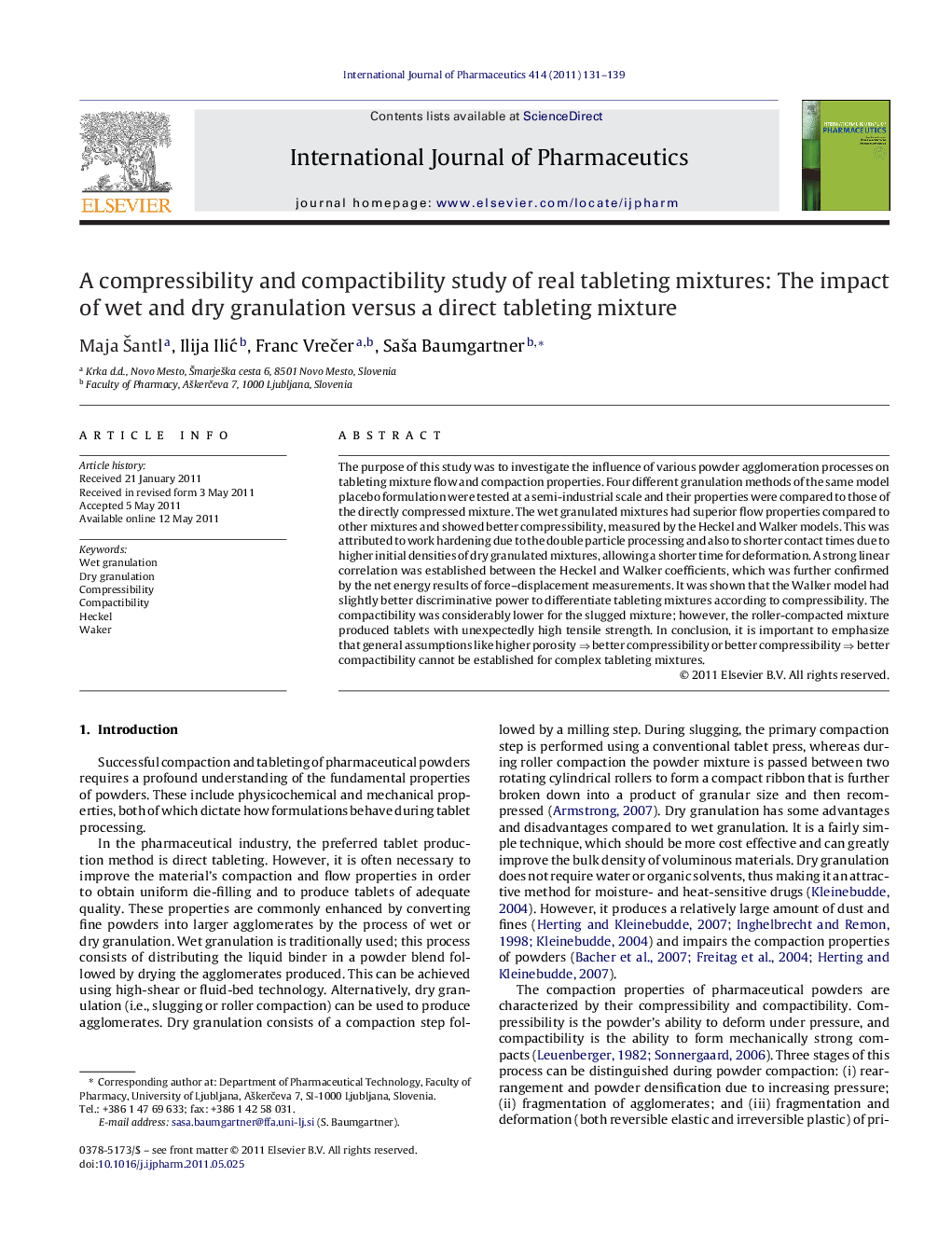| Article ID | Journal | Published Year | Pages | File Type |
|---|---|---|---|---|
| 2503378 | International Journal of Pharmaceutics | 2011 | 9 Pages |
The purpose of this study was to investigate the influence of various powder agglomeration processes on tableting mixture flow and compaction properties. Four different granulation methods of the same model placebo formulation were tested at a semi-industrial scale and their properties were compared to those of the directly compressed mixture. The wet granulated mixtures had superior flow properties compared to other mixtures and showed better compressibility, measured by the Heckel and Walker models. This was attributed to work hardening due to the double particle processing and also to shorter contact times due to higher initial densities of dry granulated mixtures, allowing a shorter time for deformation. A strong linear correlation was established between the Heckel and Walker coefficients, which was further confirmed by the net energy results of force–displacement measurements. It was shown that the Walker model had slightly better discriminative power to differentiate tableting mixtures according to compressibility. The compactibility was considerably lower for the slugged mixture; however, the roller-compacted mixture produced tablets with unexpectedly high tensile strength. In conclusion, it is important to emphasize that general assumptions like higher porosity ⇒ better compressibility or better compressibility ⇒ better compactibility cannot be established for complex tableting mixtures.
Graphical abstractCompressibility of wet processed granules of same model placbo mixture was superior to dry processed mixtures measured via Heckel and Walker models and net energy using force–displacement data.Figure optionsDownload full-size imageDownload as PowerPoint slide
